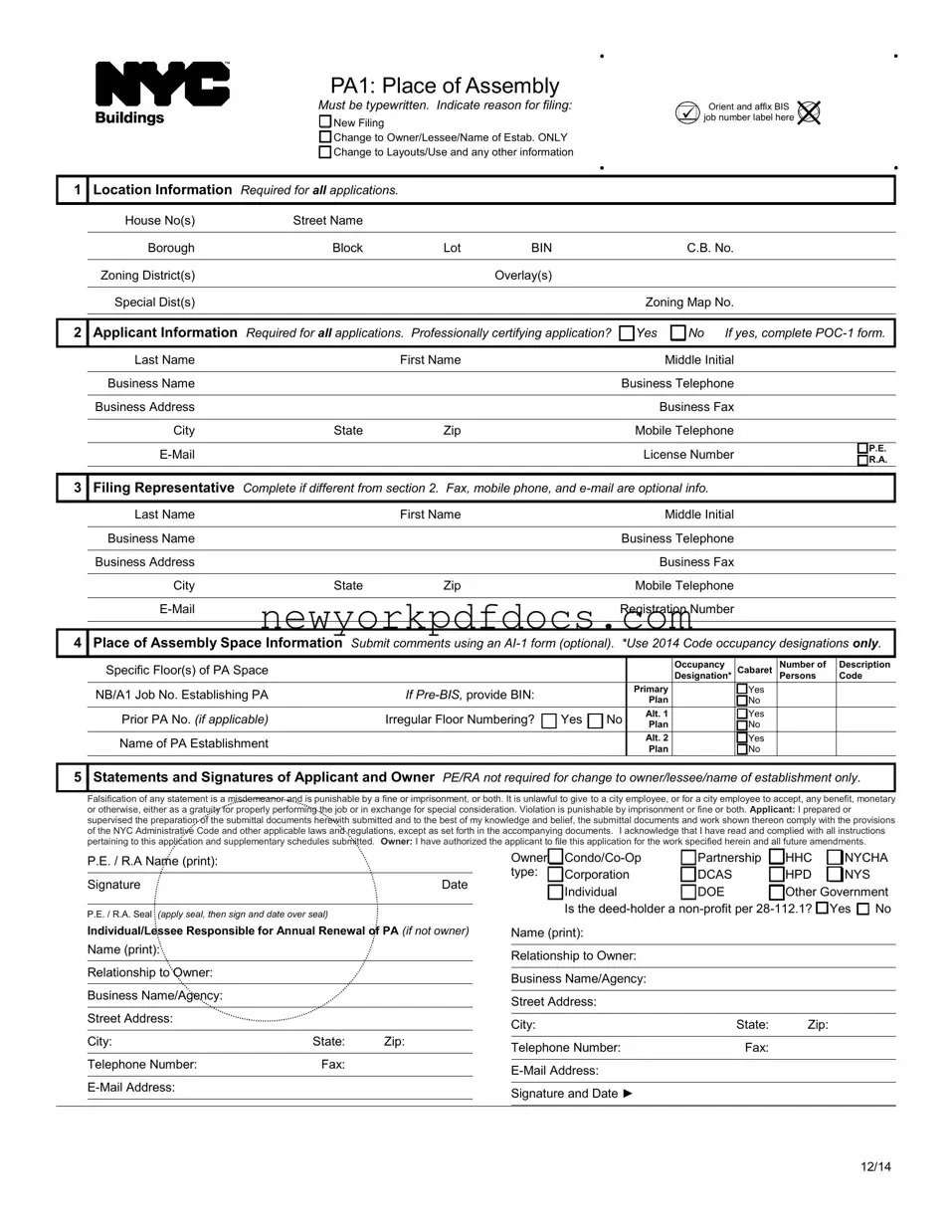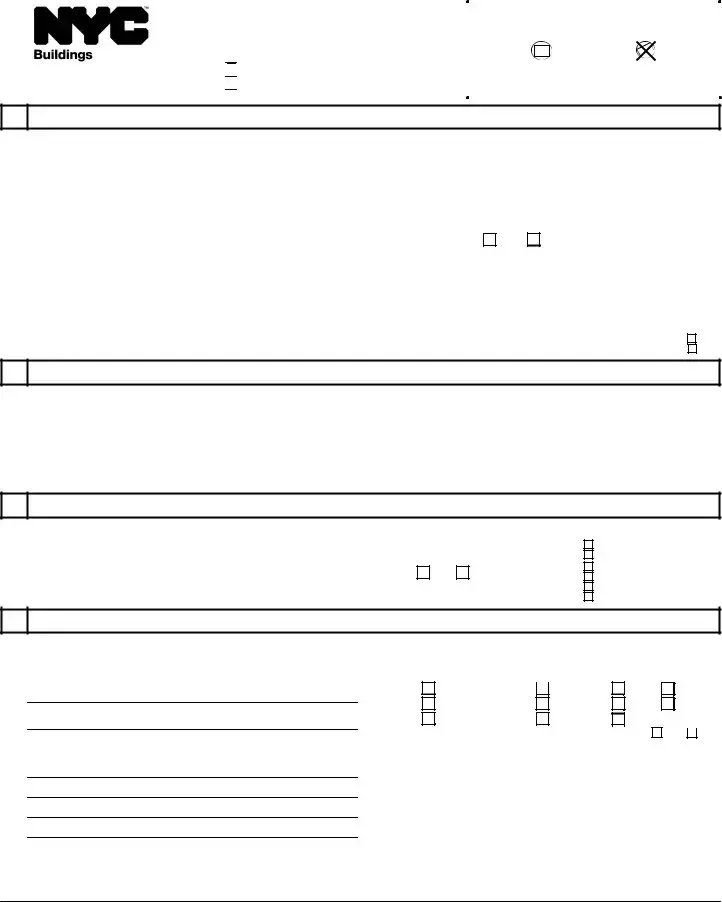The NYC PA1 form is an essential document for anyone looking to establish or modify a Place of Assembly in New York City. It requires careful attention to detail and must be typewritten. When filing, individuals need to specify the reason for submission, whether it’s a new filing, a change in ownership, or updates to the layout or use of the establishment. Key information about the location is mandatory, including the house number, street name, borough, block, lot, and zoning details. Applicants must also provide their personal and business information, which includes contact numbers and professional credentials. If someone else is filing on behalf of the applicant, their details must be included as well. The form also addresses the specifics of the assembly space, such as occupancy designations and the establishment's name. It’s crucial to understand that falsifying any information on the form can lead to serious legal consequences. The applicant and owner must sign the document, affirming their compliance with NYC regulations. Overall, the PA1 form is a vital step in ensuring that Places of Assembly operate within the framework of city laws, helping to maintain safety and order in public spaces.



 New Filing
New Filing Change to Owner/Lessee/Name of Estab. ONLY
Change to Owner/Lessee/Name of Estab. ONLY 
 Change to Layouts/Use and any other information
Change to Layouts/Use and any other information